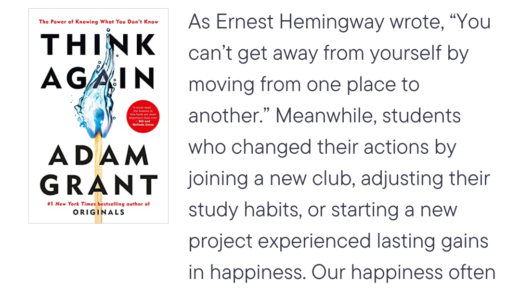Rogers identifies five factors that define how quickly innovations spread; they belong in every innovator’s playbook. Roughly summarized and loosely interpreted, they include: Relative advantage . What value does the new thing have compared to the old? This is perceived advantage, determined by the potential consumer of the innovation, not its makers. This makes it possible for a valueless innovation — from the creator’s perspective — to gain acceptance, while more valuable ones do not. Perceived advantage is built on factors that include economics, prestige, convenience, fashion, and satisfaction. Compatibility . How much effort is required to transition from the current thing to the innovation? If this cost is greater than the relative advantage, most people won’t try the innovation. These costs include people’s value systems, finances, habits, or personal beliefs. Rogers describes a Peruvian village that rejected the innovation of boiling water because of cultural beliefs that hot foods were only for sick people. You could argue all you wanted about the great benefits of boiling water, but if a religious or cultural belief forbids it, you’re wasting your breath. Technological compatibility is only part of what makes an innovation spread: the innovation has to be compatible with habits, beliefs, values, and lifestyles. Complexity . How much learning is required to apply the innovation? If a box of free, high-quality, infinite battery-life cell phones (and matching solar-powered cell towers) mysteriously appeared in 9th-century England, usage would stay at 0%, as the innovation requires a jump in complexity that would terrify people (“They’re witches’ eggs — burn them!”). The smaller the perceived conceptual gap, the higher the rate of acceptance. Trialability . How easy is it to try the innovation? Teabags were first used as giveaways so people could sample tea without buying large tins, radically improving the trialability of brewed tea. Samples, giveaways, and demonstrations are centuries-old techniques for making it risk-free to try new ideas. This is why the GAP lets you try on clothes, and the Honda dealership gives anyone with a pulse a test-drive. The easier it is to try, the faster innovations diffuse. Observability . How visible are the results of the innovation? The more visible the perceived advantage, the faster the rate of adoption, especially within social groups. Fashion fads are a great example of highly observable innovations that have little value beyond their observability. Advertising fakes observability, as many ads show people using a product, say, drinking a new brand of beer, with all kinds of wonderful things happening. Many technologies have limited observability, say, software device drivers, compared to physical products like mobile phones and trendy handbags, which people use socially.
The best ideas don’t always win. Rather, it is a mix of these 5 factors, that enable an innovation to be a lasting one. Relative advantage, Compatibility, Complexity, Trialability and Observability,



